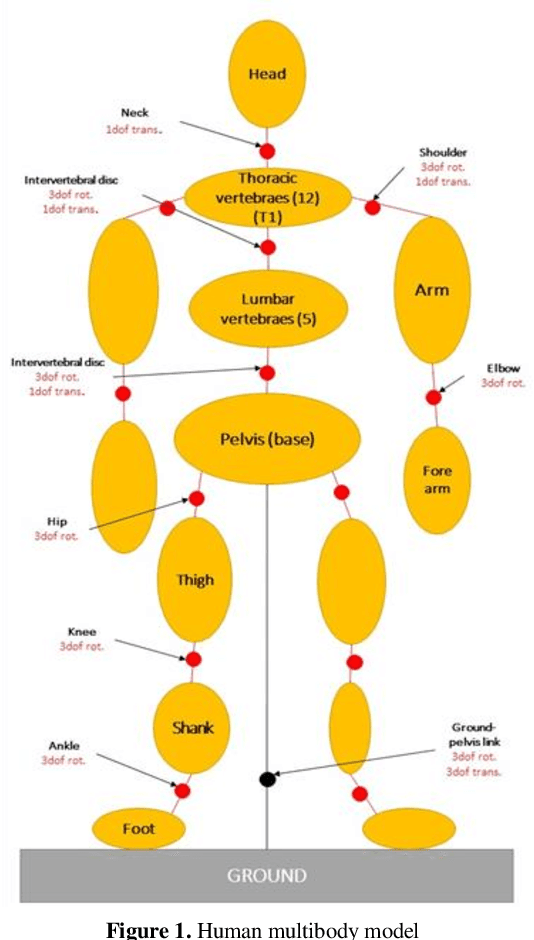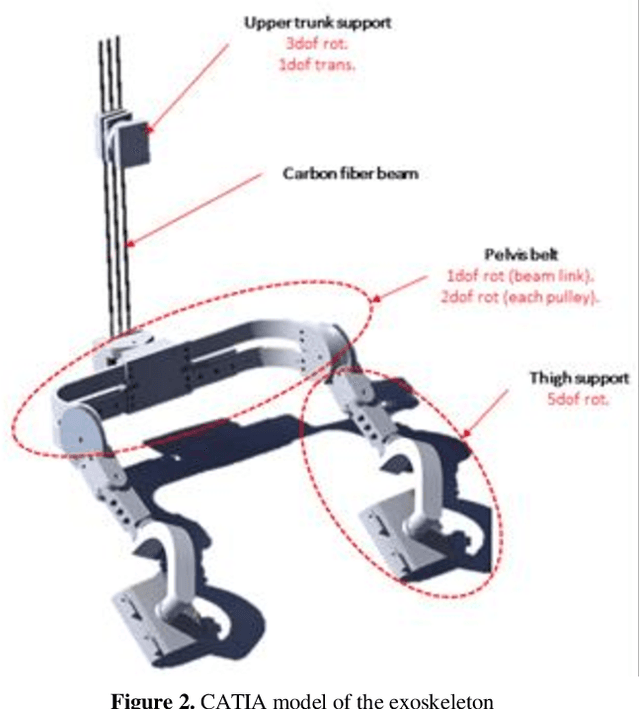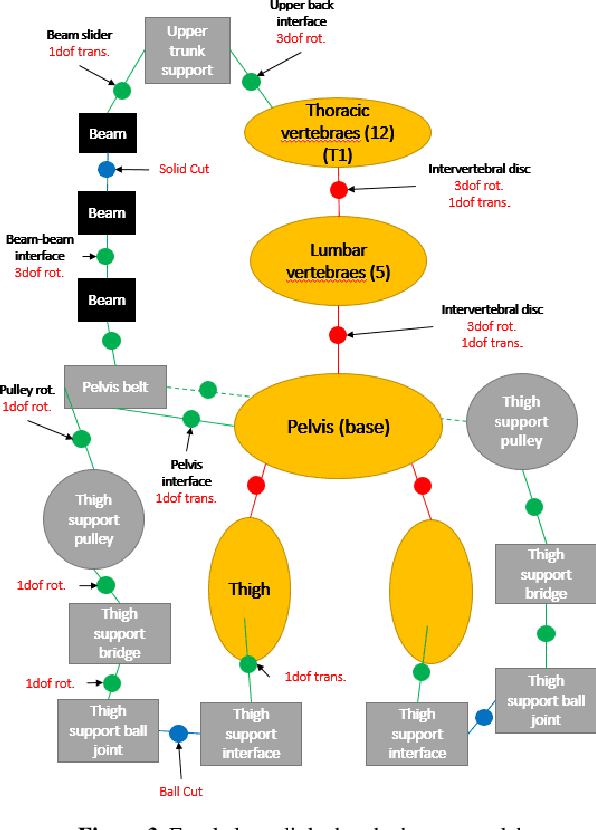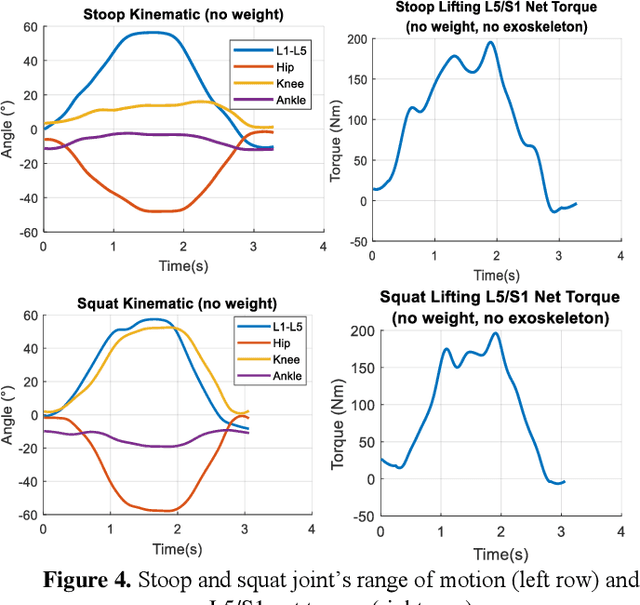Pierre Lifeng Li
Design of an assistive trunk exoskeleton based on multibody dynamic modelling
Oct 02, 2019



Abstract:Low back pain is one of the most common musculoskeletal disorder. To reduce its incidences, some back exoskeletons have been designed and already commercialized. However, there is a gap between the phases of device and testing on subjects. In fact, the main unsolved problem is the lack of realistic simulation of human-device interaction. Consequently, the objective of this paper is to design a 3D multibody model of the human body that includes the full thoracic and lumbar spine combined with a low back exoskeleton, enabling to analyze the interactions between them. The results highlight that the use of the exoskeleton reduces the net torque in the lower lumbar spine but creates normal forces transmitted through the thighs and the pelvis, which should also be considered for low back pain. As a perspective, this model would enable to redesign low back exoskeletons reducing both torques and forces in the human joints in a realistic dynamic context.
 Add to Chrome
Add to Chrome Add to Firefox
Add to Firefox Add to Edge
Add to Edge